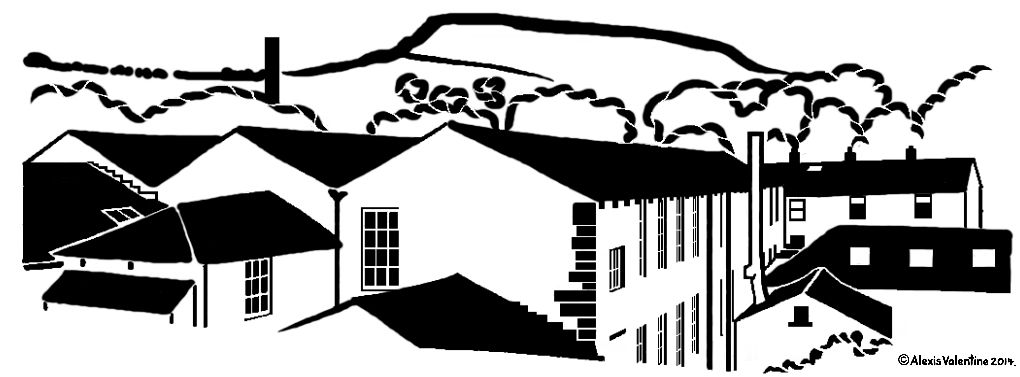Engraving Techniques
Surface Engaving using a Hand Drill
The tools that are usually used to do surface engraving are rotating diamonds but the more creative engravers (like myself) will use stones and rubber burs to achieve different textures. The burs used are fitted into a Handpiece or Rotary drill either by tightening the chuck with a key or by twisting the end of the drill to open and close the chuck release.
Surface engraving isn't very deep as the name suggests so the engraver will usually engrave lightly on the surface of the glass or crystal used to basically draw out an image or design.
When you scratch the surface of the glass it appears white so the only way to achieve dark or black areas in an image when surface engraving the engraver will have to leave those areas clear.
The use of a Handpiece is often called 'Flexible Drive Engraving' which refers to the type of drill typically used. The flexible drive hand drill has a flexible shaft running from a pendant motor which has a high torque.
I use both flexible drive and electric hand drills to engrave my work. I'm used to calling my hand drill a handpiece but that's a result of working in a dental laboratory for 32 years.
Intaglio Engraving
Intaglio engraving or Deep 3d Engraving as it is also known is when the engraver cuts deep into the glass or crystal with a hand drill or copper wheel engraver to produce a 3D image effect.
This technique is dependant on the thickness of the glass but the deeper you can go the better the effect will be.
Although this technique takes a lot longer to to master as well as to engrave the results can be quite stunning.
Intaglio engraving can take days, weeks, months or even years to complete.
I like to push the limits with this type of engraving by adding shade and texture to the depth of the engraving to create even more realism, often combining it with other techniques.
To achieve dark or black areas when engraving in this way I polish the white areas back to 'Clear' again.
Stippling Technique
This is where the engraver will build up an engraved picture by engraving tiny dots wth a diamond bur or a hand held tungsten point. This technique can be used to create another dimension to an engraved image by combining it with other techniques such as 'Surface', 'Intaglio' and 'Sand Carving'.
Sandcarving or Sandblasting
Sand carving is where an image or design is cut out of a mask which is then placed over the glass or sometimes it is cut out after the mask hadbeen placed onto the glass. The rest of the glass is then covered to protect it and the areas which are cut out are blasted with sand in a sandblasting unit before the mask is removed and the glass is then cleaned.
Sandcarving or sandblasting is good to engrave large areas in less time than hand drill engraving although it can be quite flat.
The engraver can produce multiple layers of depth by engraving different areas for a longer periods of time carfully picking out various sections of the mask to reveal a new area to sandblast. Generally the first areas picked out will be the deepest.
Shade can also be achieved by sandblasting areas in much the same way as an 'Air Brusher' would shade a spray painted image.
Comercial engravers who sandblast designs onto glass will generally not spend much time sandblasting as the grit used can be very expensive and sandcarving deep takes more time, therefore the engraving will not be very deep, in fact it will be hardly noticable to the touch.
This way mass produced items can be made cheaply and quicky.
Laser Engraving
Laser engraving is becoming more popular now that technology has advanced but there are still limits as to what a laser can do.
In my experience Laser engraving is not as good as Sandblasting as the lasered image is made up from tiny dots made on the surface of the glass with the laser creating very crude engraved images and designs.
The depth of the engraving is very slight when engraving with a laser.
Lasers are best at engraving on flat surfaces so special clamps have to be fitted to Laser engraving machines to enable them to hold and turn glasses in order to engrave their curved surfaces.
With the Laser technology as it is at the moment I think it lends itself better to the engraving of other materials such as wood and metal as much better results can be achieved.


